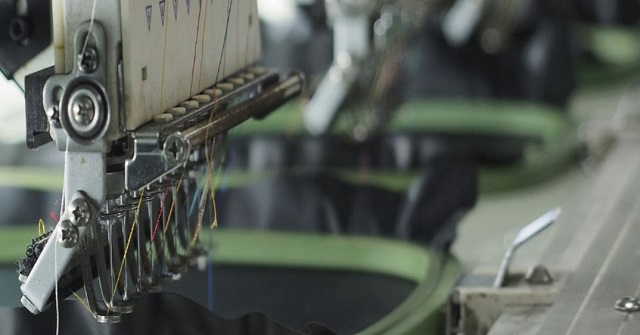Mastering Wire Harness Manufacturing: A Comprehensive Guide
In modern engineering, wire harnesses stand as the unsung heroes, silently powering a myriad of electrical systems across various industries. From automotive vehicles to aerospace technology, wire harnesses play a pivotal role in ensuring seamless connectivity and efficient power distribution. In this comprehensive guide, we delve deep into the world of wire harness manufacturing, exploring its intricacies, applications, and the meticulous process behind its creation. Join us as we unravel the mysteries behind wire harnesses and shed light on their indispensable role in today's technological landscape.
Understanding Wire Harnesses: The Backbone of Connectivity
Wire harnesses, also known as cable harnesses, are meticulously engineered bundles of electrical wires, each encased in protective coverings. These harnesses serve as the lifeline of countless electrical systems, facilitating the transmission of power and signals with precision and reliability. At their core, wire harnesses function as organized conduits, ensuring that electricity flows smoothly from point to point within a given system.
How do Wire Harnesses Work?
At their essence, wire harnesses function as organized networks of wires, each serving a specific purpose within a larger electrical system. These harnesses are meticulously designed to route power and signals efficiently, minimizing the risk of interference or electrical faults. By consolidating multiple wires into a single bundle, wire harness manufacturing optimizes space and streamlines the installation process, making them indispensable in applications where space is at a premium.
What Uses Do Wire Harnesses Serve?
The versatility of wire harnesses extends across a broad spectrum of industries, each benefiting from their unique features and capabilities. In the automotive sector, wire harnesses are utilized in vehicles for a multitude of purposes, including powering essential components such as lights, sensors, and control systems. Similarly, in aerospace technology, wire harnesses play a critical role in transmitting power and data within aircraft, ensuring smooth operation and reliable performance.
Beyond automotive and aerospace, wire harnesses find applications in a myriad of industries, including:
Industrial machinery and equipment
Consumer electronics
Medical devices
Telecommunications infrastructure
Renewable energy systems
In each of these industries, wire harnesses serve as the backbone of connectivity, enabling seamless communication and power distribution in even the most demanding environments.
Wire Harnesses Manufacturing Process
The manufacturing process for wire harnesses is a meticulous blend of art and science, involving several key steps to ensure optimal performance and reliability. Here's an overview of the typical process for making wire harnesses:
Design and Planning: The process begins with careful planning and design, where engineers collaborate to define the specifications and requirements of the wire harness.
Wire Cutting and Stripping: Next, individual wires are cut to precise lengths and stripped of their insulation to expose the conductive core.
Terminal Crimping: Metal terminals are then attached to the stripped ends of the wires using specialized crimping machines, ensuring secure and reliable connections.
Connector Assembly: If required, wires are inserted into connector housings, allowing for the mating of male and female bundles of wires.
Harness Assembly: The wires are then carefully organized and bundled together, typically using tape, sleeves, or zip ties to maintain proper alignment and spacing.
Testing and Quality Control: Once assembled, the wire harness undergoes rigorous testing to verify electrical continuity, insulation integrity, and overall performance.
Final Inspection and Packaging: Finally, the completed wire harnesses are inspected for any defects or imperfections before being packaged and prepared for shipment.
Also Read: What is The Process For Making a Wire Harness Manufacturing?
Manufacturing of Wire Harnesses by Mefron Technologies
At Mefron Technologies, we pride ourselves on delivering custom wire harness solutions that exceed our customers' expectations. With decades of experience in the industry, our team of skilled engineers and technicians is equipped to handle projects of any size or complexity. From automotive wiring harnesses to custom cable assemblies, we offer a comprehensive range of manufacturing services tailored to meet the unique needs of our clients.
Our state-of-the-art facilities are equipped with the latest technology and machinery, allowing us to deliver high-quality products with unmatched precision and efficiency. Whether you require a prototype for testing or a large-scale production run, we have the expertise and resources to bring your vision to life.
In addition to our manufacturing capabilities, we also offer value-added services such as design assistance, prototyping, and ongoing technical support. Our commitment to quality and customer satisfaction sets us apart as a trusted partner in the wire harness industry, and we look forward to serving your needs for years to come.
Conclusion
In conclusion, wire harness manufacturing is a vital component of modern engineering, enabling seamless connectivity and power distribution across various industries. From automotive vehicles to aerospace technology, wire harnesses play a critical role in ensuring the reliability and performance of electrical systems in even the most demanding environments.
By understanding the intricacies of wire harness manufacturing and partnering with a trusted provider like Mefron Technologies, companies can unlock new opportunities for innovation and growth. Whether you're developing the next generation of electric vehicles or revolutionizing telecommunications infrastructure, wire harnesses will continue to play a central role in shaping the future of technology.



Comments
Post a Comment